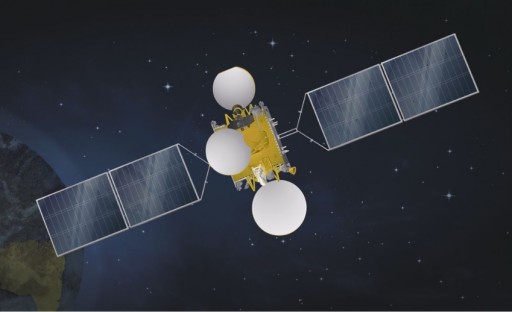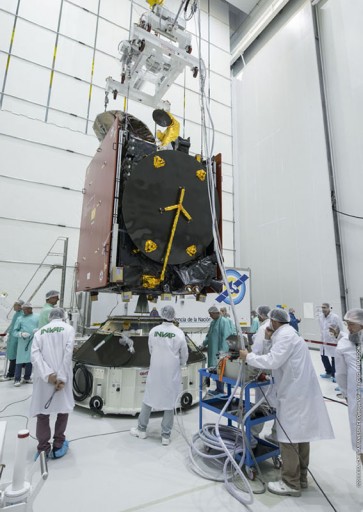ARSAT-2 Satellite Overview

ARSAT-2 is an Argentinean communications satellite built by INVAP S.E. and operated by the newly founded AR-SAT company. The project was initiated under the SSGAT program to produce the first Argentine Geostationary Telecommunications Satellites.
Launched in October 2014, ARSAT-1 became the first large satellite development of Argentina, using an indigenous satellite platform but relying on foreign entities for the production of certain subsystems as well as the communication payload. ARSAT-1 acted as a pathfinder to allow INVAP satellite engineers to gain experience in the development of a large communications satellite, taking advantage of the experience brought by the contractors from Europe, namely Airbus Defence and Space and Thales Alenia.

Building on ARSAT-1, INVAP again served as the prime contractor for ARSAT-2, integrating indigenous and contracted subsystems into the satellite platform. Again, Airbus Defence and Space delivered a number of satellite subsystem components including the propulsion system, main computer and central cylinder while the communications payload was provided by Thales Alenia Space. About 50% of the satellite’s parts were manufactured in Argentina, including the flight software.
The spacecraft uses the new ARSAT-3K Bus for light and medium-weight communication satellites. The spacecraft uses a central satellite body that hosts all satellite systems including two deployable solar arrays, two large antenna reflectors and an Earth-facing deck hosting other payload elements. ARSAT-2 has a total mass of 2,985 Kilograms and measures 2.9 by 1.8 by 2.2 meters in its stowed configuration with a span of 16.5 meters when deployed in orbit. The satellite has a mass of 2,977 Kilograms, including 1,500 liters of propellant.
Power is generated by two deployable solar arrays, each consisting of two panels to deliver a total power of 4,200 Watts. Power is stored in batteries and distributed to the various satellite systems by dedicated EPS units, the satellite payload has a power allocation of 3,500 W. The spacecraft is three-axis stabilized using reaction wheels and a series of attitude determination sensors for precise pointing including an Inertial Measurement Unit, Star Trackers, Earth and Sun Sensors.
A chemical propulsion system is used for apogee-raising and stationkeeping in Geostationary Orbit for a minimum service life of 15 years. The satellite uses an S400 main propulsion system and S10 attitude control thrusters, each delivering 10N of thrust. The S400 series built by Astrium are bi-propellant engines using Monomethylhydrazine and Mixed Oxides of Nitrogen as propellants. Depending on the version used, S400 provides 420 to 425 Newtons of Thrust with a specific impulse of 318-321 seconds.
The ARSAT-2 satellite hosts a communications payload consisting of 10 C-Band and 26 Ku-Band transponders coupled to two deployable and one fixed antenna. The Ku-Band system delivers two communication beams while the C-Band system delivers a wide coverage zone.
The satellite covers the Americas to deliver data services of all kinds and television distribution. Stationed at 81° West, ARSAT-2 will operate for at least 15 years, to be joined in the future by ARSAT-3 that will carry an all-Ku payload and will be comprised of even more components manufactured by the Argentinean space industry.
